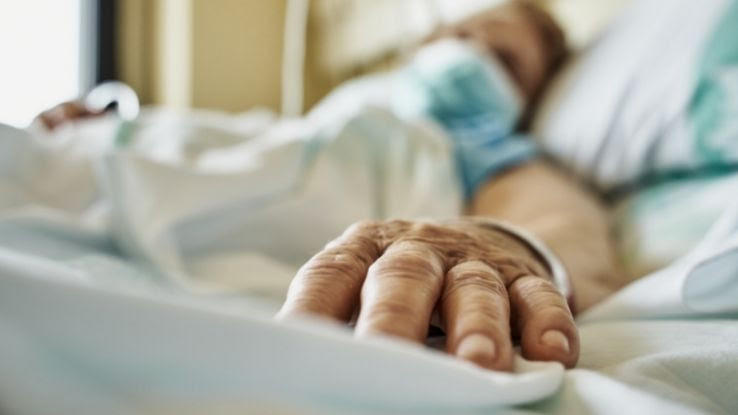An Unbiased View of Pacific Prime
An Unbiased View of Pacific Prime
Blog Article
Pacific Prime Things To Know Before You Buy
Table of Contents4 Simple Techniques For Pacific PrimePacific Prime Fundamentals ExplainedExamine This Report about Pacific PrimeThe Ultimate Guide To Pacific PrimeThe 8-Second Trick For Pacific Prime

This is since the information were collected for a duration of solid economic performance. Of the approximated 42 million individuals who were without insurance, just about regarding 420,000 (concerning 1 percent) were under 65 years of age, the age at which most Americans come to be eligible for Medicare; 32 million were adults in between ages 18 and 65, about 19 percent of all grownups in this age; and 10 million were children under 18 years old, concerning 13.9 percent of all children (Mills, 2000).
These price quotes of the number of individuals without insurance are generated from the yearly March Supplement to the Existing Population Study (CPS), performed by the Census Bureau. Unless or else noted, national quotes of individuals without health insurance policy and percentages of the population with various sort of protection are based on the CPS, one of the most extensively utilized resource of estimates of insurance protection and uninsurance prices.
Getting My Pacific Prime To Work

Still, the CPS is particularly valuable because it creates yearly quotes relatively rapidly, reporting the previous year's insurance policy coverage approximates each September, and due to the fact that it is the basis for a consistent set of quotes for more than 20 years, enabling evaluation of patterns in protection over time. For these reasons, along with the considerable usage of the CPS in other studies of insurance policy protection that exist in this report, we rely on CPS estimates, with constraints noted.

The price quote of the number of uninsured individuals increases when a population's insurance standing is tracked for a number of years. Over a three-year period starting early in 1993, 72 million people, 29 percent of the U.S. https://visual.ly/users/pacificpr1me/portfolio. populace, lacked insurance coverage for at least one month. Within a single year (1994 ), 53 million individuals experienced a minimum of a month without insurance coverage (Bennefield, 1998a)
6 out of every 10 uninsured adults are themselves employed. Functioning does enhance the probability that one and one's household participants will certainly have insurance, it is not a guarantee. Even members of family members with 2 permanent breadwinner have virtually a one-in-ten opportunity of being without insurance (9.1 percent without insurance rate) (Hoffman and Pohl, 2000).
Not known Factual Statements About Pacific Prime
New immigrants represent a substantial percentage of people without wellness insurance policy. One analysis has actually associated a significant section of the recent development in the size of the U.S. without insurance population to immigrants that arrived in the nation between 1994 and 1998 (Camarota and Edwards, 2000). Current immigrants (those who pertained to the United States within the past 4 years) do have a high rate of being without insurance (46 percent), however they and their kids account for simply 6 percent of those without insurance coverage across the country (Holahan et al., 2001).
The relationship in between medical insurance and accessibility to care is well established, as recorded later in this chapter. Although the connection in between wellness insurance and health and wellness results is neither straight neither straightforward, a substantial clinical and wellness solutions study literary works web links medical insurance protection to better access to care, much better top quality, and boosted individual and populace health and wellness condition.
Degrees of evaluation for checking out the impacts of uninsurance. It focuses especially on those without any kind of wellness insurance for any length of time.
The smart Trick of Pacific Prime That Nobody is Discussing
The troubles faced by the underinsured are in some aspects comparable to those dealt with by the uninsured, although they are generally much less serious. Health and wellness insurance coverage, nevertheless, is neither necessary neither adequate to acquire access to clinical services. The independent and straight result of health and wellness insurance protection on access to health solutions is well established.
Others will certainly get the healthcare they need also without health and wellness insurance, by spending for it expense or seeking it from carriers that use care free or at highly subsidized prices. more info here For still others, medical insurance alone does not guarantee receipt of care as a result of various other nonfinancial obstacles, such as a lack of health treatment companies in their community, minimal access to transport, illiteracy, or linguistic and social differences.
The Ultimate Guide To Pacific Prime
Formal research study regarding without insurance populaces in the United States dates to the late 1920s and very early 1930s when the Board on the Cost of Treatment created a collection of records about financing doctor workplace visits and hospitalizations. This concern came to be salient as the numbers of medically indigent climbed throughout the Great Clinical depression.
Report this page